Editorials
Clea DuVall: The Unsung Queer Icon of 90s and 00s Horror

Some people may find themselves tragically unaware of who Clea DuVall is. Even those who don’t know her name most certainly know her face. Clea DuVall is the alternative queer icon of the 90s and 00s you’ve seen in many movies and shows.
Coming Out in a Closeted Era
However, despite becoming a queer icon early on in her career with memorable roles in But I’m a Cheerleader and The Faculty, it wasn’t until 2016 that Clea DuVall officially came out to the public. Clea DuVall explained that to those closest to her, she came out as a lesbian at sixteen. As far as society at large was concerned, though, she told The Independent:
“I was very closeted and very afraid of people finding out I was gay […] It was the nineties; there was no conversation about sexuality – you were just not going to talk about it.”
She went on to tell The Independent that the release of cult favorite coming-of-age lesbian flick But I’m a Cheerleader was difficult since she was still in the closet at the time:
“It was dangerous for me […] It was such a scary time. Once it came out and we started the press cycle for it, I remember feeling like, ‘Oh shit, I need to hide, I need to stop.’”
The Struggle of Queer Identity
Clea DuVall’s anxiety about how society would react is the sad reality for many who live outside of heteronormative sexuality. How many remain in the shadows, not just because it’s no one else’s business, but because we’re afraid of how people will react?
I came out as bisexual as a teenager, although these days, if I had to label it, I’d consider myself pan (though 92% of the people in my life don’t know it). I am happily married, so frequently, I feel my sexuality is irrelevant – you won’t hear me talk about it often. However, Clea DuVall meant a lot to me in those years before and while I was coming out, feeling weird and isolated from everyone else.
A Beacon for the Queer Community
Even before publicly claiming her queerness, Clea DuVall was a queer icon and a reminder to those of us in the shadows that we weren’t alone. Given Clea DuVall’s significant importance to me, and so many others, it seems the perfect time to reflect on a few of her major roles in horror that gave queer representation and girl power, painting a landscape of the times.

The Faculty: Missed Opportunity for Lesbian Representation
When people think Clea DuVall in horror, the first thing that comes to mind tends to be The Faculty, where a team of teenagers tees off against a parasitic alien race controlling their teachers’ bodies. If anyone wants a snapshot of the 90s gothic grunge, look no further than Clea DuVall’s role as Stokely in this film.
Stokely captured just about everything that makes Clea DuVall’s characters so magnetic. She is clever, with a tough exterior, a sensitive side, and the ability to do what needs to be done. In another layer of depth, Stokely is a lesbian and is relentlessly bullied for it.
A Disappointing Twist
However, the movie quickly shoots itself in the foot by having Stokely proclaim at the end that she made up being a lesbian just to stir the pot, and she ends up with a male jock hero. Oh, the severity of the cringe.
While there are some obvious nods to the 80’s hit The Breakfast Club with this ending (as the “Basket Case” ends up with the jock, this time not totally transforming herself at least), the film missed an opportunity to follow through on lesbian representation.
Instead, it instituted more problematic stereotypes (such as people not being taken seriously about their sexual orientation, for starters.)
The 90s Cultural Context
I understand that being bisexual wasn’t regularly recognized in the mainstream in the nineties but come on. She could have at least been bi. It’s as if the film toys with the idea of introducing an iconic lesbian horror character but then changes their minds right at the end. That moment is a dark mark on what is otherwise a fun alien invasion horror movie.
Unfortunately, given the climate of the times, had the film followed through on the representation, Clea DuVall’s initial fears during But I’m a Cheerleader could have been realized. After all, The Faculty had a bigger budget, bigger studio, and bigger stars than But I’m a Cheerleader had. Logistically, more eyes were going to be on it. So many eyes might attract the powerful, hateful sort, or it could have made her uncomfortable. Then perhaps we wouldn’t have gotten Clea DuVall in the many roles that followed. Maybe we can think of it as a career-saving loophole to give us a lesbian character with a pacifier for the backlash. A necessary evil to ensure we’d see her in the catalog of productions that followed.

Girl Power in Ghosts of Mars
This sci-fi horror film by John Carpenter saw DuVall in a role that perfectly matched the energy we have come to expect from her characters. Her hard, masculine edge and simultaneous soft, caring femininity made her a perfect fit for the role of Bashira Kincaid, the rookie Mars Police Force officer who helps fight off the army of Mars’ undead.
Feminine Strength in Sci-Fi Horror
Ghosts of Mars is brimming with powerful feminine energy, as the film that also stars Jason Statham and Ice Cube sees Natasha Henstridge take the leading role as Lieutenant Melanie Ballard. She leads the squadron that sees herself and Bashira standing on the front lines against some pretty formidable alien spirits.
The film was the perfect vehicle for Clea DuVall’s all-encapsulating energy, which we’d already witnessed in another movie two years prior.

Everything at Once in Girl, Interrupted
Maybe it’s a leap to cover this role in depth for a horror blog, but the film’s dark tones and moments that stick with you forever make it worth mentioning. We got to see Clea DuVall in the role of Georgina, the patient of a 1960s mental institution, who had a childlike innocence and a penchant for pathological lying (or “Pseudologia fantastica.”)
Girl, Interrupted is another film packed with feminine energy, as the few male roles only exist as tools for the female characters. Interestingly, both girl power films also deal heavily with autonomy. Ghosts of Mars sees bodies being taken over by spirits and an innocent man being held prisoner, while Girl, Interrupted has heavy themes of freedom and imprisonment of both the mind and body.
The Duality of Georgina
The film highlighted Clea DuVall’s ability to tap into her softer side terrifyingly. Georgina wasn’t frightening because her dad was a member of the CIA and could have us all dead in minutes; Georgina haunts us because she exists in the juxtaposition of innocence and deceit. It is an excellent role for Clea DuVall because she can portray this middle ground seamlessly. Many of her parts have this ambivalent nature because whether it be feminine/masculine, strong/weak, outgoing/shy, Clea DuVall can and has been all of it at once. Giving her a role in an insane asylum allowed her to let her contradictory performance shine.
But, speaking of insane asylums…
The Real Horror in American Horror Story: Asylum
Though it was brief, Clea DuVall’s role as Wendy Peyser, the secret girlfriend of Lana Winters, is unforgettable.
Wendy is a pillar of her 1960s idyllic Massachusetts community, working as a schoolteacher. However, she harbors a dark secret that could cost her everything. You see, she is a lesbian in a loving relationship with reporter Lana Winters. Oh, the Floridian horror!
So, when Lana Winters finds out too much about the Briarcliffe Asylum, this relationship is used against Wendy to convince her to lock her girlfriend away in that asylum. Threatened with exposure, mindful of losing her job and her reputation, Wendy agrees. It’s a treacherous act for whom the broken system is to blame.
Commentary on Queer Struggles
It highlighted the intolerance of the times and the things that people were subjected to “keep the gay away.” (As if anyone who’s seen it could forget Lana Winters’ conversion therapy.)
The role makes an important commentary on how heavy the secret burden of one’s sexuality can be for fear of society’s blowback.
While these events were set in the fifties, Wendy Peyser’s plight isn’t so different from the plights of many today. “Don’t say gay” is the way in the state of Florida now, and the fifties suddenly don’t feel so long ago.
Clea DuVall’s Lasting Impact
This overarching theme of American Horror Story: Asylum echoed the plights, not only of Clea DuVall’s own but many in the LGBTQ+ community. Clea DuVall explained to Insider:
“Coming out is not an easy thing to do no matter who you are, no matter where you come from. We all have the opportunity to reach the other side and […] still deserve to be loved, and deserve to be accepted…”
“Wherever you are in that process, be nice to yourself. Like you’re going through something that is not gonna last forever, and you need to love yourself through it.”
A Voice for the LGBTQ+ Community
Clea DuVall is an underrated horror queer icon. Her appearances in horror tend to coincide with an important commentary about the plights and experiences of those in the queer community. Her role in The Faculty serves as a reflection of the times where to be a lesbian could cost one their job. Her involvement in Ghosts of Mars and Girl, Interrupted served us girl power at its finest while simultaneously delving into autonomy. Then, her appearance in American Horror Story: Asylum echoes the same resonance that The Faculty left behind. If you don’t know her name, you should.
May the woman of the hour receive the recognition she deserves. Let us know your favorite Clea DuVall role in the comments!
Editorials
Is ‘Scream 2’ Still the Worst of the Series?
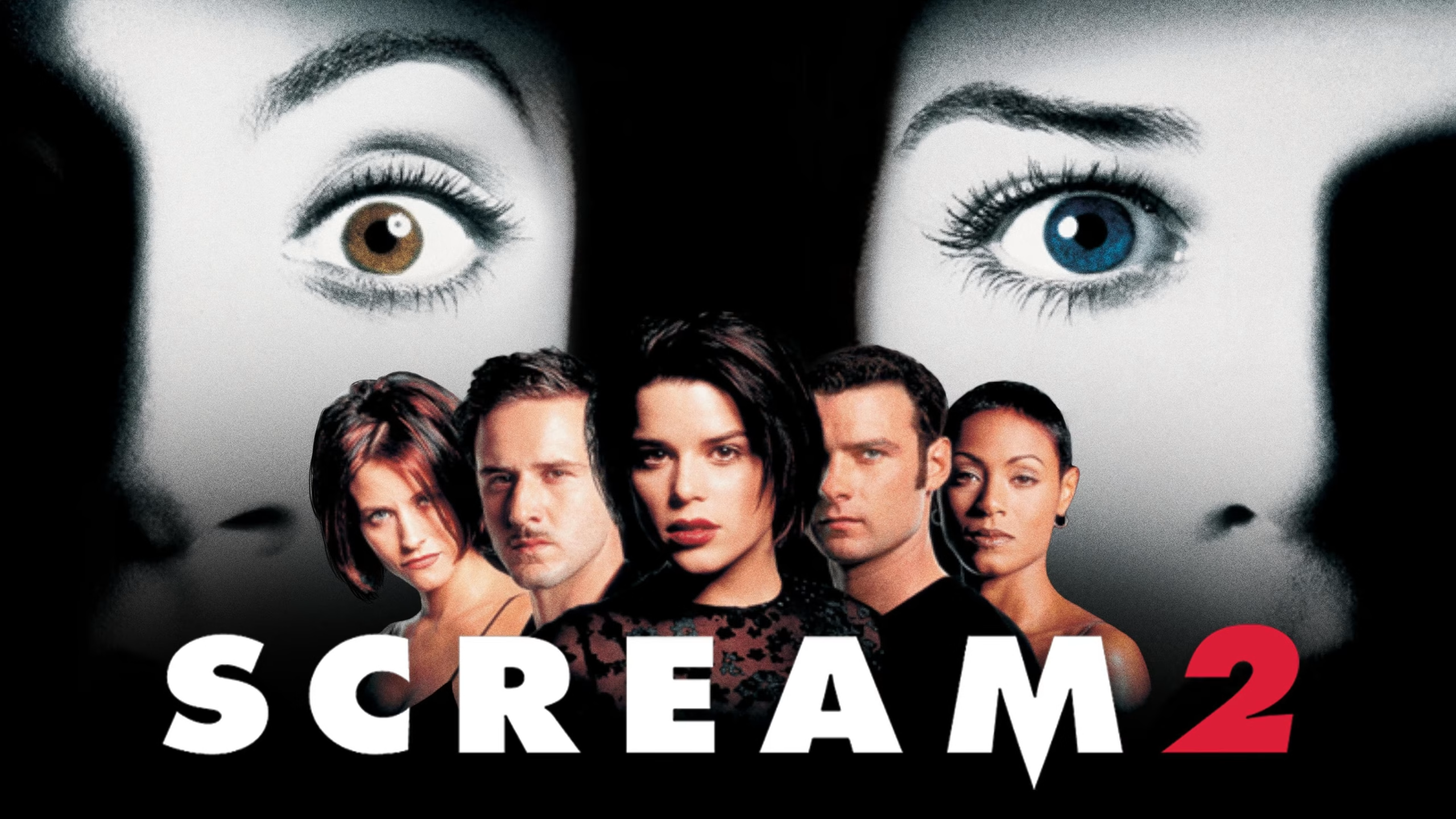
There are only so many times I can get away with burying the lede with an editorial headline before someone throws a rock at me. It may or may not be justified when they do. This article is not an attempt at ragebaiting Scream fans, I promise. Neither was my Scream 3 article, which I’m still completely right about.
I do firmly believe that Scream 2 is, at the very least, the last Scream film I’d want to watch. But what was initially just me complaining about a film that I disregard as the weakest entry in its series has since developed into trying to address what it does right. You’ve heard of the expression “jack of all trades, master of none”, and to me Scream 2 really was the jack of all trades of the franchise for the longest time.
It technically has everything a Scream movie needs. Its opening is great, but it’s not the best of them by a long shot. Its killers are unexpected, but not particularly interesting, feeling flat and one-dimensional compared to the others. It has kills, but only a few of them are particularly shocking or well executed. It pokes fun at the genre but doesn’t say anything particularly bold in terms of commentary. Having everything a Scream movie needs is the bare minimum to me.
But the question is, what does Scream 2 do best exactly? Finding that answer involves highlighting what each of the other sequels are great at, and trying to pick out what Scream 2 has that the others don’t.

Scream 3 Is the Big Finale That Utilizes Its Setting Perfectly
Scream as a series handily dodges the trap most horror franchises fall into: rehashing and retreading the same territory over and over. That’s because every one of its films are in essence trying to do something a little different and a little bolder.
Scream 3 is especially bold because it was conceived, written, and executed as the final installment in the Scream series. And it does that incredibly well. Taking the action away from a locale similar to Woodsboro, Scream 3 tosses our characters into the frying pan of a Hollywood film production. Despite its notorious number of rewrites and script changes (one of which resulted in our first solo Ghostface), it still manages to be a perfect culmination of Sidney Prescott’s story.
I won’t repeat myself too much (go read my previous article on the subject), but 3 is often maligned for as good a film as it turned out to be. And for all of its clunkier reveals, and its ghost mom antics, it understands how to utilize its setting and send its characters off into the sunset right.
Scream 4’s Meta Commentary Wakes Scream from a Deep Sleep
As Wes Craven’s final film, Scream 4 has a very special place in the franchise. It was and still is largely adored for bringing back the franchise from a deep 11-year sleep. With one of the craziest openings in any horror film, let alone a Scream film, it sets the tone for a bombastic return and pays off in spades with the journey it takes us on.
Its primary Ghostface Jill Roberts is a fan favorite, and for some people, she is the best to ever wear the mask. Its script is the source of many memorable moments, not the least of which is Kirby’s iconic rapid-fire response to the horror remakes question. And most importantly, it makes a bold and surprisingly effective return for our main trio of Sidney, Dewey, and Gale, whose return didn’t feel trite or hammy when they ended up coming back to Woodsboro for more.
Craven’s work on 4 truly understands the power its predecessors had exerted on the horror genre, both irreverent in its metacommentary and celebratory of the Scream series as a whole. The film is less of a love letter to the genre and more of a kicking down of the door to remind people what Scream is about. 4’s story re-established that Scream isn’t going away, no matter how long it takes for another film, and no matter how many franchises try to take its place.
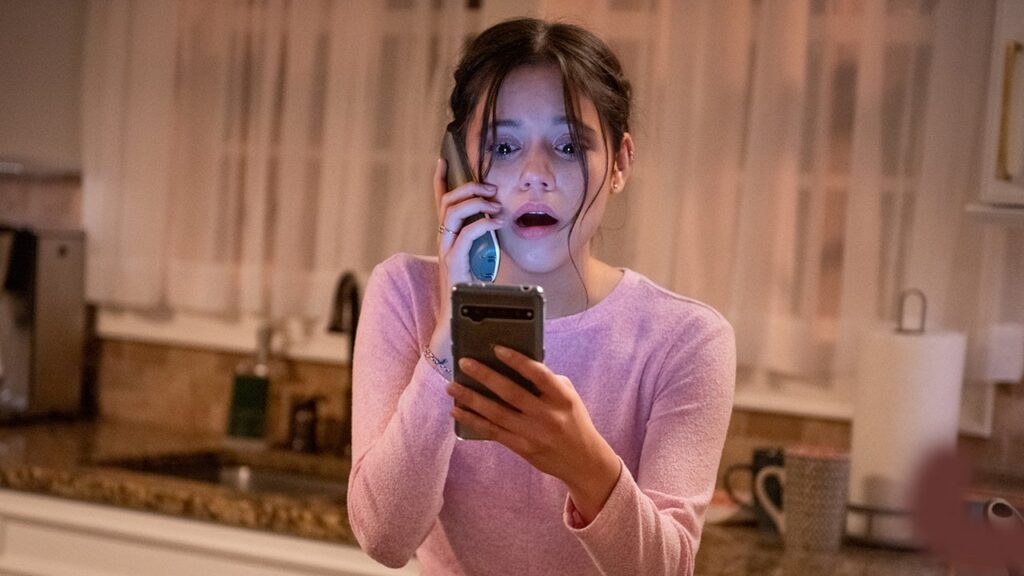
Scream 5 & 6 Is Radio Silence’s Brutal and Bloody Attitude Era
Put simply, Scream 5 and 6’s strong suit was not its characters. It was not its clever writing. The Radio Silence duology in the Scream series excelled in one thing: beating the hell out of its characters.
Wrestling fans (of which there is an unsurprising amount of crossover with horror fans) will know why I call it the Attitude Era. Just like WWE’s most infamous stretch of history, Radio Silence brought something especially aggressive to their entries. And it’s because these films were just brutal. Handing the reins to the series, Bettinelli-Olpin and Gillet gifted a special kineticism to the classic Scream chase sequences, insane finales, and especially its ruthless killers.
All five of the Ghostfaces present in 5 and 6 are the definition of nasty. They’re unrelenting, and in my humble opinion, the freakiest since the original duo of Stu Macher and Billy Loomis. Getting to hear all the air get sucked out of the room as Dewey is gutted like a fish in 5 was still an incredible moment to experience in theatres, and it’s something I don’t think would have happened if the films were any less mean and any less explosively violent.
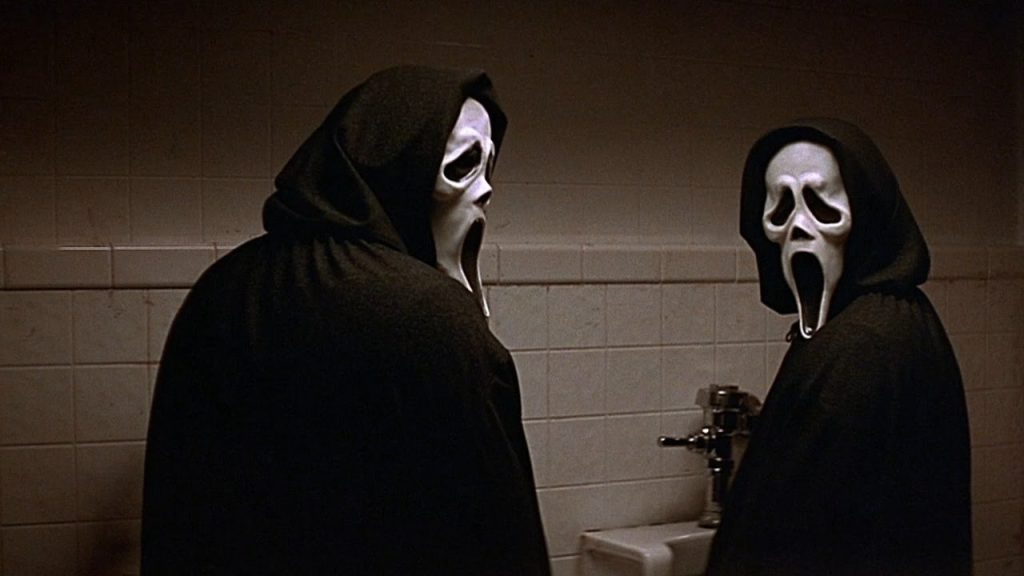
So, What Does Scream 2 Do Best Exactly?
So now, after looking at all these entries and all of their greatest qualities, what does Scream 2 have that none of the others do? What must I concede to Scream 2?
Really great character development.
Film is a medium of spectacle most of the time, and this is reflected in how we critique and compliment them. It affects how we look back on them, sometimes treating them more harshly than they deserve because they don’t have that visual flash. But for every ounce of spectacle Scream 2 lacks, I have to admit, it does an incredible job of developing Sidney Prescott as a character.
On a rare rewatch, it’s clear Neve Campbell is carrying the entirety of Scream 2 on her back just because of how compelling she makes Sidney. Watching her slowly fight against a tide of paranoia, fear, and distrust of the people around her once more, watching her be plunged back into the nightmare, is undeniably effective.
It’s also where Dewey and Gale are really cemented as a couple, and where the seeds of them always returning to each other are planted. Going from a mutual simmering disrespect to an affectionate couple to inseparable but awkward and in love is just classic; two people who complete each other in how different they are, but are inevitably pulled back and forth by those differences, their bond is one of the major highlights throughout the series.
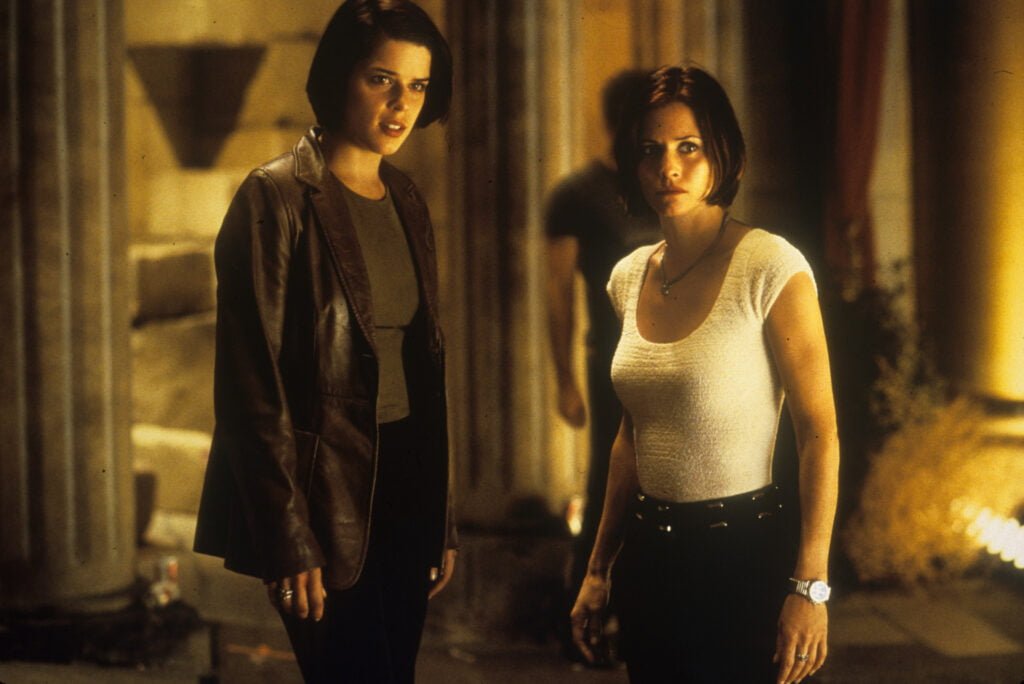
Maybe All the Scream Films Are Just Good?
These three characters are the heart of the series, long after they’ve been written out. I talk a big game about how Scream 3 is the perfect ending for the franchise, but I like to gloss over the fact that Scream 2 does a lot of the legwork when it comes to developing the characters of Dewey, Gale, and especially Sidney.
Without 2, 3 just isn’t that effective when it comes to giving Sidney her long deserved peace. Without 2, the way we see Sidney’s return in 4 & 5 doesn’t hit as hard. All of the Scream movies owe something to Scream 2 in the same way they owe something to the original Scream. I think I’ve come to a new point of view when it comes to the Scream franchise: maybe there is no bad entry. Maybe none of them have to be the worst. Each one interlinks with the others in their own unique way.
And even though I doubt I will ever really love Scream 2, it has an undeniable strength in its character writing that permeates throughout the whole franchise. And that at the very least keeps it from being the worst Scream film.
Editorials
The Halloween Franchise Peaked With H20 Here’s Why
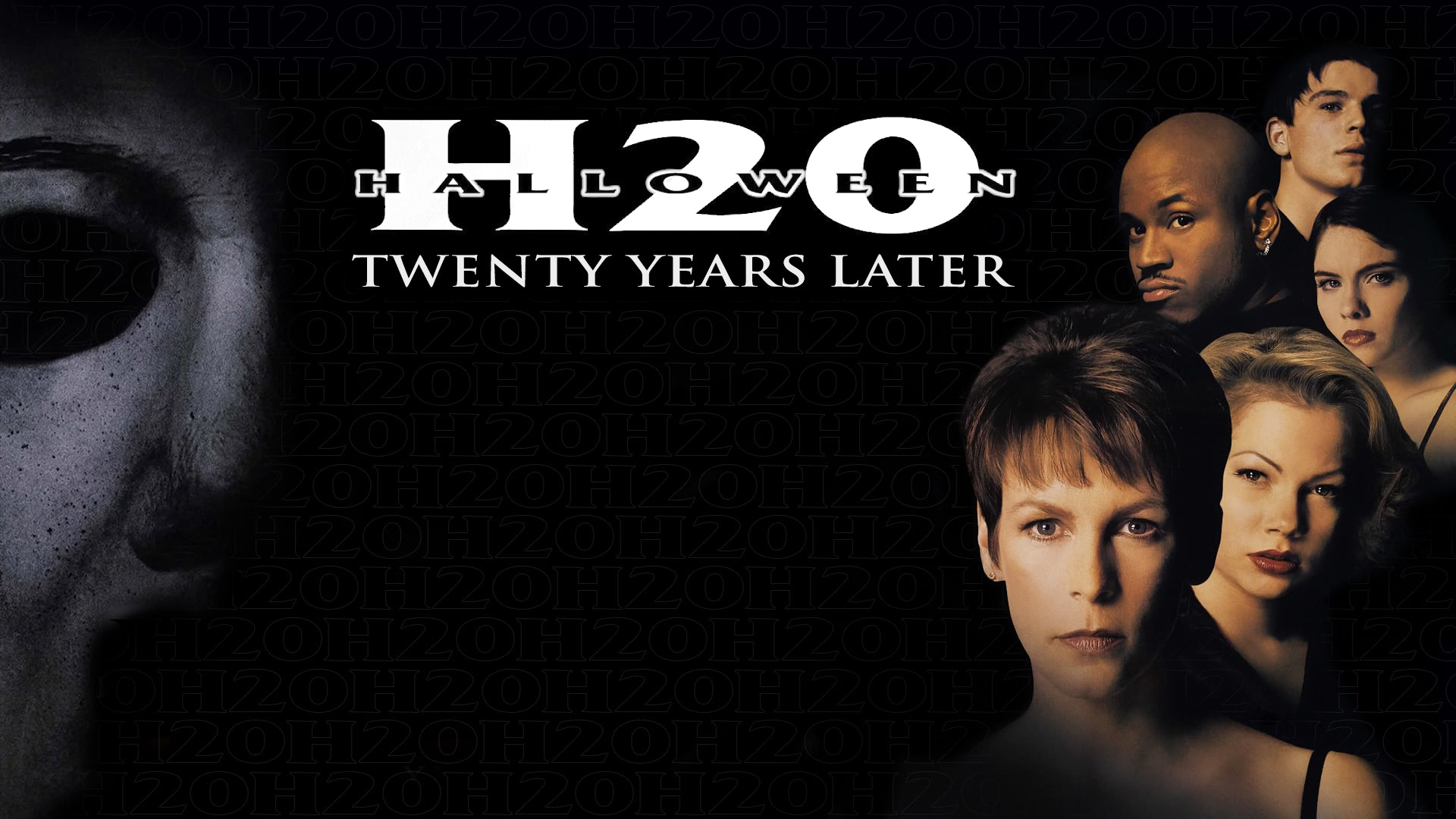
I’m going to begin this conversation with a sort of insane thought. Halloween as a franchise maybe should have ended with its first film.
That’s not to say there’s no value in the Halloween films. Much to the contrary, I like the first three films a lot. I recommend Halloween 3: Season of the Witch to people an annoying amount; I even try to watch it a few times every October to keep the vibes up. And as you already know from clicking on this article, I enjoy Halloween H20: 20 Years Later quite a bit.
I’ve even softened up on the Rob Zombie remake duology over the years. I don’t like them, but it’s like getting flowers, I can still appreciate them. However, Halloween, as a series, has long suffered from its own success. And sometimes, it feels like it’s just going to keep suffering.
HALLOWEEN’S FIRST BOLD CHOICE AFTER 16 YEARS OF WAITING
It’s easy to forget that John Carpenter’s original Halloween was effectively the Paranormal Activity of its time. Flipping a cool $70 million and change off of a $300,000 budget, it has had a genuinely immeasurable impact on the cinematic landscape and how horror films are made.
For some, that’s a bad thing. Notoriously, my beloved 3rd entry in the franchise was considered a hard misstep by audiences. Everyone knows the story; the resounding “Where’s Michael?” response to the third entry gunned down Carpenter’s desires to turn Halloween into an anthology series. So, after going into hiding for 5 years, Halloween 4 continued the story of Michael in 1988.
And then it just kept going.
As the years went on, it became progressively harder and harder to innovate, resulting in some very odd plotlines and tones. Which is why Halloween H20 is where the franchise peaked. Because it had a rare essence to it. It had guts.
It was willing to actually kill the series once and for all, even if it was impossible to do so.
EVIL DOESN’T DIE TONIGHT, THE CONTRACT SAYS SO
Before David Gordon Green’s reboot trilogy brought Laurie back as a Sarah Connor style badass, H20’s pre-production had reinvented Strode to usher in the 20th anniversary of the first film. She went from a resilient young woman into a traumatized survivor running from her past.
The original concept for Halloween H20 involved a substance abusing Laurie Strode trying to get clean so she could die with dignity against an escaped Michael. In a turn of events, she would find the will to live and kill him once and for all. It was a concept Jamie Lee Curtis was passionate about, understandably so. Laurie wasn’t the first final girl, but she was the codifier for that ideal, in a way Jess Bradford and Sally Hardesty before her weren’t. It would have made for a harrowing exploration of what was debatably the most important final girl ever.
That isn’t what happened.
There is an infamous video from a Q&A panel with Jamie Lee Curtis where she explains that the blame for Michael surviving H20 lies primarily with one man: the late great Moustapha Akkad. Akkad was famous for his business acumen, but that desire to see the Halloween franchise make bankroll had ultimately stolen away Laurie’s triumphant victory over Michael.
You see, Akkad had written a clause into the contracts surrounding the film. A clause that she could not, in no uncertain terms, kill Michael Myers. Michael would live, no matter what Laurie did. But thanks to the meddling mind of Scream creator Kevin Williamson, who had been brought on to work on the screenplay for H20, Laurie did get her vengeance in a way.
LAURIE STRODES RETURN DONE RIGHT
The actual H20 follows Laurie Strode in hiding years after Halloween 2, ignoring the events of the sequels. She’s the headmistress of a boarding school, living under a fake name far from Haddonfield with her son. But still, she can’t let go of that Halloween night. She sees Michael’s face, The Shape, everywhere. She can barely stomach talking about what happened. But when Michael kills Dr. Loomis, nurse Marion Chambers, and then finds her, Laurie is forced to face her greatest fear once and for all.
And she does. After a prolonged chase and fight on the grounds of the school, she refuses to let a wounded Michael be taken into custody. Stealing a cop’s gun and an ambulance, Laurie runs Michael off a cliff and pins him against a tree with the vehicle. She shares a brief moment with him, inscrutable eyes reflecting Michael’s. They could be expressing a number of possible emotions. Is it empathy? Hatred? Pity? Fear leaving her for the final time?
Regardless of what it is, she’s done feeling it. With a hefty swing, she decapitates him with a fire axe, ending Michael for the last time. It’s over.
Roll credits. Audience cheers. The world is healing.
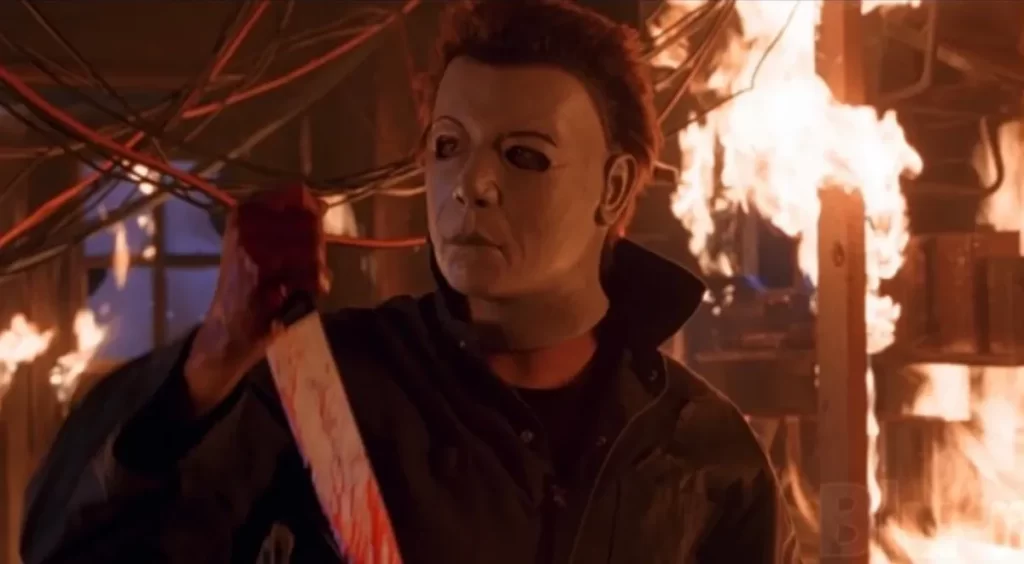
AND THEN HALLOWEEN: RESURRECTION HAPPENS
Yes, and then Halloween: Resurrection happens. Laurie is killed in the first few minutes, revealing that Michael pulled the old bamboozle switcheroonie in the previous film. She had actually just killed an ambulance driver that Michael had put the mask on. Williamson’s trick of making both Laurie and the audience believe they had killed Michael worked. But that same trick curled a finger on the monkey’s paw and led to what is definitively the worst film in the franchise.
A proto-internet streamer subplot. The kid from Smart House is there for some reason. Busta Rhymes hits Michael Myers with the Charlie Murphy front kick from that one Dave Chappelle sketch about Rick James.
Roll credits. The audience boos. Everyone who spent money on it feels like they’re being stamped to death by horses.
HALLOWEEN AS A FRANCHISE IS TERRIFIED OF ENDINGS
And this is why I say that Halloween H20 is probably the best we’re going to get out of the series, maybe ever. It is a series that, at its core, has had producers terrified of endings since even Halloween 2. Carpenter never intended there to be a sequel, or any follow ups for that matter. That was mostly the work of producer Irwin Yablans, who pushed hard to continue the story of Michael. And then, eventually, it was the work of every other producer who demanded they milk Halloween for all its worth.
H20 is a film that is antithetical to that idea. When watched as intended, ignoring Resurrection, it’s fantastic. As the end of Laurie and Michael’s story, one that shows evil is weak without fear to bolster it, it is pretty much the perfect finale. Hot off the heels of Scream’s success in 1996, H20 is often talked about as an attempt to cash in on the meta-horror craze of the 90s and early 2000s. The way people discuss it, you would think it was supposed to be a tongue-in-cheek slasher that made fun of itself and Halloween’s legacy. But in reality, aside from its humor, it ends up being quite reflective and thoughtful of that legacy.
It’s not spiteful of the films that came before it because it ends by tricking the audience. It’s what that trick represents, boldly spitting in the eye of Halloween being held prisoner for money. Mocking Halloween being stuck in an eternal cycle of rinsing and repeating the same events. It doesn’t care about franchising or longevity; it cares about telling a good story and letting its hero rest. It’s respectful to Carpenter’s creation in a way that other attempts to continue the series simply weren’t.
H20 TELLS AN ENDING, HALLOWEEN ENDS TRIES TO SELL YOU ONE
It begs the question: why does H20 work here in how it ends the series, but Halloween Ends doesn’t?
All of Ends biggest issues stem from the fact that, unlike H20, it’s trying to sell you an ending instead of making one that feels right. The maudlin closer it gives doesn’t feel real. It doesn’t feel true to the Laurie it shows us, or any other iteration of the character for that matter. It doesn’t feel genuinely emotional in any regard.
And that’s because Ends as a whole doesn’t have the spirit that H20 does. Ends is, first and foremost, a highlight reel reminding you of how cool Halloween is instead of understanding why any of its previous entries were effective. From its marketing to its incredibly clunky climax, it feels like it’s an advertisement for never letting go of Halloween, even when it should have been done a while ago. And that’s just the wrong lesson to leave on.
JANET LEIGH’S CAMEO IN H20 SPEAKS VOLUMES
Halloween H20 has a pretty famous cameo from Janet Leigh in it, an OG scream queen and the real-life mother of Jamie Lee Curtis. In it, they have a heart-to-heart as fictional characters Laurie Strode and Norma Watson. It’s made more impactful when you realize it was Leigh’s penultimate film performance, and her final performance in a horror film.
The moment serves as a cute in-joke on their real-life relationship, but more than that, it foreshadows the film’s ending. Norma urges Laurie to move past her fear, to relish her future as a survivor instead of being caught up in the past and reliving the same night over and over again.
I find this scene even more poignant now, seeing how neatly it reflects on what has happened to Halloween as a franchise in the years since the original, and especially since H20. It’s a series that got stuck in trying to continue the same story and just got progressively worse at it. In some way, it feels like it’s urging us to make a choice. No matter how deep a legacy of fear may be, it must come to an end at some point. There is no need to cling to the same stories over and over. We can enjoy them for what they are without returning to them.
No matter what the future of the Halloween franchise is, only a viewer themselves can choose where the story ends. It doesn’t matter how many times the studio brings him back, you have to make the choice. Only you decide when it ends. And for my money, H20 is the best ending you can ask for.























